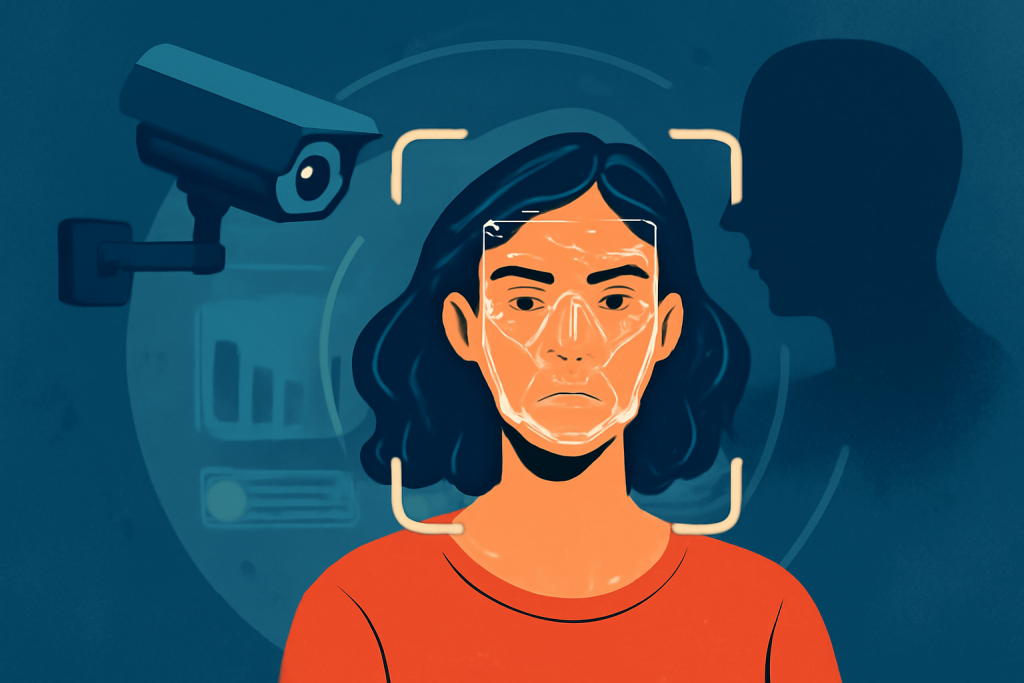Facial recognition technology (FRT) has evolved rapidly in recent years. It now serves as a crucial tool in security, marketing, and healthcare. However, its rise also brings significant ethical concerns. What happens when this technology infringes on personal privacy or produces biased outcomes? In this article, we explore the key ethics of facial recognition, especially as it becomes more integrated into daily life.

What Is Facial Recognition Technology?
Facial recognition identifies and verifies individuals based on facial features. This system captures, analyzes, and compares a person’s facial data to a database of known faces. Over time, it has expanded into various sectors, such as law enforcement, retail, and healthcare. While it offers many benefits, it also raises concerns about privacy, consent, and misuse.
As this technology becomes more widespread, we must consider its ethical implications carefully.
Privacy vs. Security
A major ethical debate surrounding facial recognition centers on privacy. More public and private institutions are deploying this technology, prompting a key question: Is it ethical to track individuals without their consent?
Critics argue that FRT violates privacy by monitoring people without their knowledge. These systems can track movements, habits, and personal interactions, often with no transparency about how the data is used.
Proponents, however, argue that FRT enhances security. They believe it helps law enforcement solve crimes faster and improve public safety. However, these views conflict with concerns over surveillance becoming intrusive and even harmful to privacy.
The Bias Problem
Another significant ethical issue is the bias inherent in many facial recognition systems. Studies show that these systems often misidentify people of color, women, and other minorities more frequently than white males. This bias stems from the lack of diversity in datasets used to train the algorithms.
Facial recognition’s racial and gender biases can have severe consequences, especially in areas like law enforcement and hiring. Incorrect identifications can lead to wrongful arrests or discrimination. Ethical concerns grow over the potential for FRT to reinforce societal inequalities.
To mitigate this, experts suggest improving datasets and continually evaluating FRT to ensure fairness. However, achieving equity remains a difficult challenge.
Consent and Transparency
Consent remains one of the most ethically contentious issues. Many people don’t know when they’re being identified or tracked, especially in public spaces. This lack of transparency is critical because it deprives individuals of the right to control their data.
In many cases, people aren’t even aware that facial recognition is being used to monitor them. Unlike social media accounts that can be deleted, facial data can’t be erased or altered. Once collected, it can be used in ways that individuals may not agree with.
Furthermore, the security of this sensitive data is often uncertain. If facial data is compromised, it could lead to identity theft or unauthorized surveillance. This highlights the need for stronger regulations and clearer guidelines on FRT’s use.
Ethical Use in Law Enforcement and Surveillance
Facial recognition’s use by law enforcement remains one of the most controversial topics. Supporters claim that it helps police solve crimes and locate suspects faster. Critics argue that it risks infringing on civil liberties. The growing use of FRT in surveillance could lead to a “Big Brother” scenario, where governments and private entities constantly monitor citizens.
In some countries, such as China, facial recognition is used widely to track people in public spaces. This raises concerns about privacy violations and government overreach. Some worry that surveillance could be used to suppress dissent or target certain groups.
In the United States, cities like San Francisco have banned facial recognition by government agencies, citing privacy and civil rights concerns. Other regions are debating the necessity and risks of using FRT in public spaces.
Striking a Balance
The key to responsibly using facial recognition technology is finding a balance between innovation and ethics. While FRT has proven benefits, we must prioritize transparency, fairness, and privacy to prevent harm.
To achieve this, governments, tech companies, and citizens must work together. This collaboration will ensure that facial recognition is used responsibly, with respect for individual rights.
Conclusion: Looking Ahead
Facial recognition technology will continue to play a larger role in our lives. It presents ethical challenges, from privacy concerns to the potential for bias. As this technology grows, so too does the need for ethical guidelines.
We must continue to question how FRT is used and make sure that it’s deployed in ways that protect privacy and uphold justice. The future of facial recognition depends on our ability to address these ethical issues effectively.
References:
- Smith, J. (2023) ‘Ethical Implications of Facial Recognition Technology’ Journal of Technology Ethics, 15(2) pp. 123-140.
- Liu, Y., and Zhang, S. (2022) ‘Bias in Facial Recognition Algorithms: A Deep Dive’ AI and Society, 28(5) pp. 547-558.
- McCullough, D. (2021) ‘The Risks of Facial Recognition in Public Surveillance’ Privacy and Policy Journal, 32(4) pp. 42-55.









